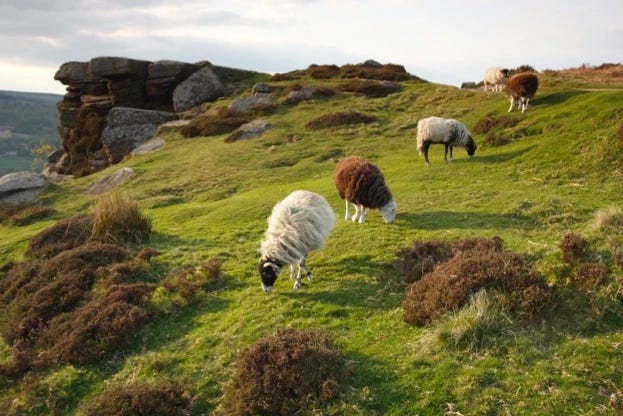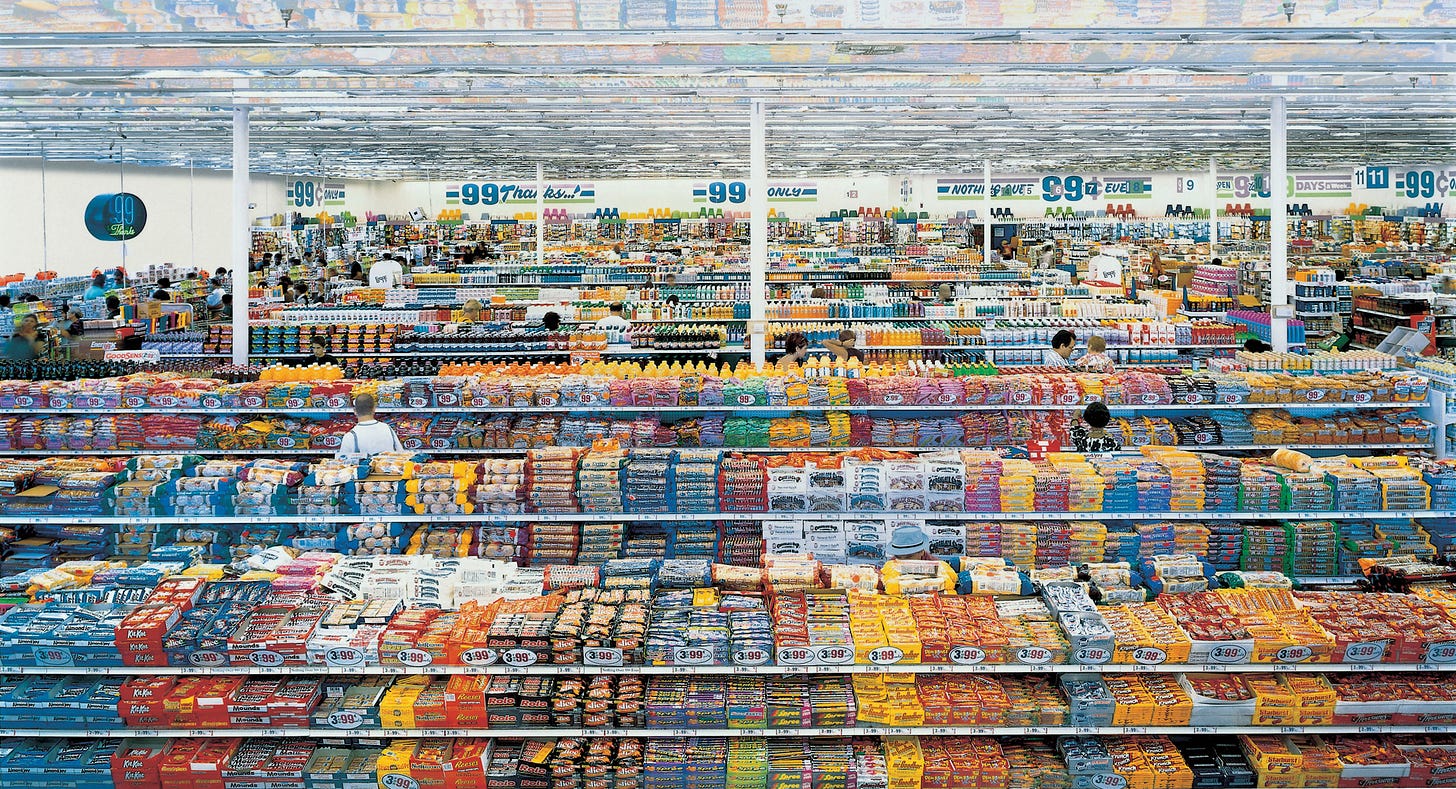News from a Changing Planet -- #28 -- Understanding Food Costs
Why they don't really make sense.
If beef is so inefficient to produce, why isn’t it more expensive?
This is the kind of question that is so straightforward that we would expect a correspondingly straightforward answer. We’ve also probably heard, hundreds of times, how bad meat and dairy production are for the environment, largely because of inefficiency. It would seem like figuring out the relationship between inefficiency and cost, and then rebalancing it, would go a long way towards reducing the environmental impact of animal agriculture, right?
Yes. But, as always, it’s more complicated than that, and anyone who tries to give you a simple, straightforward answer isn’t telling you the full story.
A dedicated reader* of this newsletter recently said that he was listening to a podcast in which people were discussing the relative efficiency of producing beef vs. tofu (in this example). The podcast host cited data that said “it takes 100 times as much land to produce a kilocalorie of beef …versus plant-based alternatives, and that it takes almost 100 times as much land to produce a gram of protein from beef … versus peas or tofu,” and cited that data to ask the question that I posed above.
But, our reader didn’t get the satisfying answer he was looking for. Unfortunately, this is what happens when you consume media other than News from a Changing Planet. So, he came to me.
I will try to answer the question! To help me, I called Benjamin Halpern, a UCSB professor of marine biology and conservation, who is also an author of a major study about the environmental impacts of global food production.
Externalities are a huge part of the cost discrepancy, Halpern said. “Environmental costs are almost never internalized into the cost of food products,” he said. “Beef has a very large environmental footprint compared to corn, but we don’t capture those externalities in our pricing system.” (It’s corn!)

These come in the form of declining air and water quality, loss of biodiversity, and greenhouse gas emissions. These all cost us in lots of ways: healthcare, losses to industries like tourism and fishing, which depend on clean water and healthy ecosystems, and protecting against extreme weather events or rebuilding after them.
Outsourcing these costs to society (instead of factoring them into the cost of the product) allows meat to be offered at an artificially low price, particularly in the United States.
Secondly, in the US, agricultural subsidies are a factor. I touched on this in a previous edition about the Iowa caucuses, but basically, the US government, using taxpayer money, pays farmers to grow commodity crops, like corn and soy.
Farm subsidies arose in the Great Depression/Dust Bowl era, and were a lifeline to farmers, but, as with many government programs, their original goals have been distorted over time. (This article from Modern Farmer is a very helpful primer on the agricultural subsidy issue. I would continue at great length, but many of you have said you’d like these to be shorter…)

Further, and shockingly, there are no subsidies for specialty crops (the fruits and vegetables we actually eat, which represent only 3 percent of cropland in the US), and farmers who switch from commodities to specialties forfeit their subsidies if they convert more than 15 percent of their acreage.
Plus, Halpern said, there are also indirect subsidies: ranchers (cattle or sheep) can graze their animals on public land for very low rates, which also helps keep costs down.
A final confounding problem is a question of data: what data are people looking at, what it captures and what it leaves out.
The data that the podcasters were citing is dependent on global averages, which doesn’t accurately capture the complexity and variances of food production.
“If you want to understand sustainability or policy and strategy or reducing environmental impact of food production, you have to account for those differences,” Halpern said, which is why his paper retained geographical information to country and subnational levels.
Also, some pasture land isn’t arable, and grazing also doesn’t require any of the inputs that I mentioned above. “Grazing has a much lower impact than row crops, but it’s not zero impact by any means,” said Halpern.
Plus, places that are suitable for some crops wouldn’t be for others. It’s not a one-to-one switch – somewhere that’s great for corn isn’t necessarily going to be great for lentils or berries or tomatoes. Changing what we grow where would require major dietary shifts – eating less meat, eating locally, and eating seasonally. That’s no longer how people in developed economies eat. Plus, Halpern said, data shows that consumers don’t generally substitute one food for another; they add in a new one. That’s particularly true for meat substitutes, like Beyond Meat or Impossible Foods, for both omnivores and vegetarians.
And finally, Halpern said it’s not that useful to compare kilocalories – general readers might think about calories all the time, but they actually don’t tell us that much about our food system. “Sugar cane is really high in calories,” but focusing on the efficiency per calorie of sugar cane wouldn’t give you great answers about nutrition or environmental impacts, said Halpern. Protein or weight is a much better measure – and yes, I know that the podcasters did mention protein, but it’s not quite true that it takes 100 times as much land for the same amount of protein from animal vs. plant sources – it’s closer to 75 times, even by the data they were citing.
Food is complicated and personal, and meat and dairy have micronutrients that are harder to get elsewhere. But, as the global population and its middle class grow, and more and more people move to cities where they will be more dependent on refrigeration, it’s worth trying to understand how we all get our food, and the possible ways to do it better. You can’t solve a problem that you don’t understand. So thank you to Ben Halpern and everyone else who tries to help us all do that.
(*That dedicated reader is Nick Roth! Please reach out to him with any comments and concerns. If you have a question that you’d like me to answer in a forthcoming newsletter, please, ask away and you could be similarly featured!)
For those interested, I recently reviewed Jenny Odell’s book, Saving Time: Discovering a Life Beyond the Clock for the New York Times.
And I also wrote an article about deep sea microbes, how important they are, and how deep sea mining might threaten them (and all of us!) for Oceanus, Woods Hole Oceanographic Institution’s magazine.
As always, please write me with questions, comments, or ideas. More information on the results of last edition’s survey soon!
Tatiana






